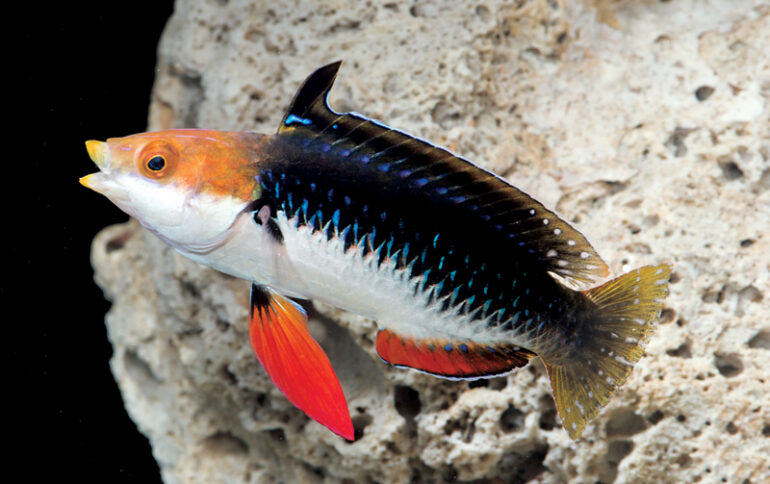Cirrhilabrus hygroxerus is the latin name of the newest species of fairy wrasse on the block, and it’s got a cool common name too. The monsoon fairy wrasse hails from the Timor Sea in Northwest Australia.
The newly described Cirrhilabrus hydroxerus is introduced with some great aquarium photography showing the similarity between it and two other fairy wrasses. Cirrhilabrus morrisoni and the relatively new Cirrhilabrus humanni both share adjoining natural ranges with Cirrhilabrus hygroxerus.

The monsoon fairy wrasse shares the same ‘stubby fin’ dorsal, red pelvic and anal fins as Cirrhilabrus humanni of the Lesser Sunda Islands of Indonesia, north of the island of Timor. Yet C. hygroxerus has the black dorsal, body and white ventral area as C. morrisoni from western Timor Sea, but south of TImor.

While the basis for the description of the Monsoon Fairy Wrasse is made solely from the 19 specimens collected in the Timor Sea of Australia, there are examples of this fish from Indonesian aquarium fish collectors as well.
Despite the apparent continuum in distribution and appearance, the Australian version of Cirrihulabrus hygroxerus has its own look with a truly bright white ventral part of the body and overall with the rest of the body, even in female monsoon wrasses.

The monsoon wrasse is found at a reasonably shallow depth of around 20 meters or 66 feet, give or take a few fathoms if the habitat is right. Most of the type specimens for Cirrhilabrus hygroxerus are between 2 and 2.5 inches but based of prior experience with similar species, it’s safe to say that both males and female could easily attain three inches, or around 7.5 centimeters.
Cirrhilabrus hygroxerus, the monsoon fairy wrasse is described by Gerald Allen and Michael Hammer in the Journal of the Ocean Science Foundation. [JOSF] 



